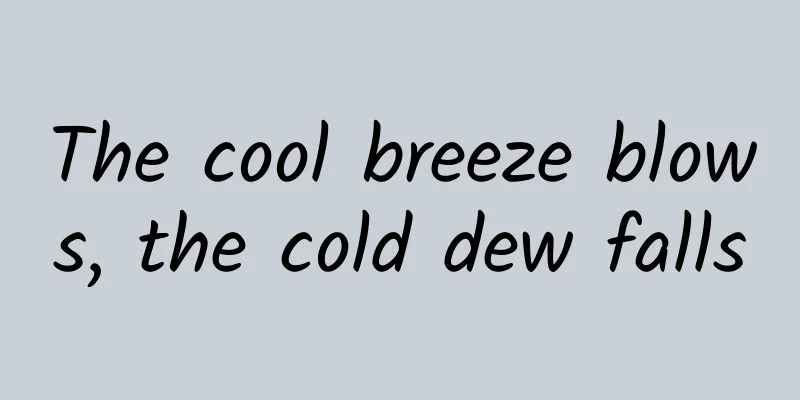Can singing cause lung explosion? These people at risk should pay attention →

|
The death of a famous singer, who was reportedly hospitalized several times for spontaneous pneumothorax, has drawn public attention to this unfamiliar but potentially fatal disease. Pneumothorax, commonly known as "bursting lung", is often misunderstood as "lung explosion". In fact, it is an emergency caused by abnormal accumulation of gas compressing lung tissue. The conflict between the professional characteristics of artists and health risks just reveals the complex face of pneumothorax - it is not only a medical problem, but also a microcosm of the interweaving of lifestyle and human fragility. This article will analyze the nature of pneumothorax from a scientific perspective and answer a core question: Why does seemingly ordinary singing become a "health killer" for some people? The physiological code of pneumothorax: the "invisible collapse" of the lungs The human chest cavity is a confined space, and the lungs rely on negative pressure to expand to achieve gas exchange. When the alveoli or pleura are broken due to congenital defects, external damage or disease erosion, the outside air will rush into the pleural cavity. These abnormal gases are like a gradually expanding balloon, squeezing the lung tissue and causing it to collapse. If timely intervention is not made, the compressed lungs may completely lose their function, and even the heart and large blood vessels may be compressed due to mediastinal shift, causing circulatory failure. Spontaneous pneumothorax is divided into primary and secondary types. Primary pneumothorax is more common in apparently healthy young people, whose lungs often have congenital bullae (vesicles formed by weak alveolar walls); secondary pneumothorax is closely related to underlying diseases such as chronic obstructive pulmonary disease and pulmonary fibrosis. The particularity of the singer's profession is that long-term high-intensity vocalization may aggravate the pressure fluctuations in the lungs. If combined with bullae, a forced ventilation may become a triggering factor. High-risk group characteristics: Who is at risk? Although pneumothorax can occur in any individual, certain groups are particularly susceptible: 1. “Natural defects” in physiological structure Tall and thin adolescent males are common in primary pneumothorax. During the rapid growth period, the blood supply to the top of the lung is relatively insufficient, resulting in poor development of the local alveolar wall and the formation of easily ruptured bullae. The chest shape of this group of people is also narrower and longer, and the negative pressure in the chest cavity is unevenly distributed, further increasing the risk of alveolar rupture. 2. “Overlapping risks” of chronic lung disease The alveolar structure of patients with chronic obstructive pulmonary disease and emphysema has long been damaged, and coughing or slight exertion can induce pneumothorax. Scars left after the healing of tuberculosis and erosion of lung tissue by lung cancer lesions can also destroy the integrity of the pleura. For such patients, pneumothorax is often a sign of worsening disease. 3. The “stress trap” of professional behavior The changes in external pressure that divers are subjected to during deep diving, the continuous exhalation resistance of wind instrument players, and the breath-holding and force-exertion of weightlifters can all cause dramatic fluctuations in intrapulmonary pressure. Even daily violent coughing or laughing can pose a threat to people with pulmonary bullae. If singers use chest breathing for a long time and rely too much on the larynx for vocalization, not only will their vocal cords be damaged, but they may also increase the alveolar load due to incorrect breathing patterns. Symptom identification: Be alert to the body's "silent alarm". The clinical manifestations of pneumothorax vary greatly, ranging from mild discomfort to asphyxiation and shock, which is closely related to its occurrence speed, amount of accumulated gas and basic lung function. 1. Typical symptoms Sudden unilateral chest pain is the first symptom for most patients. The pain is often described as "knife-like" or "needle-like", which worsens with deep breathing or coughing. As the degree of lung collapse worsens, patients will experience difficulty breathing, especially when lying flat. Some people are accompanied by compensatory reactions such as dry cough, increased heart rate, and cold skin. 2. Hidden manifestations Patients with a small amount of pneumothorax or chronic lung disease may have mild symptoms, only shortness of breath or fatigue after activity. At this time, weakened breath sounds on the affected side and tympanic sounds on percussion are important clues. The popularity of smart wearable devices in recent years has made blood oxygen saturation monitoring an auxiliary means of early detection of pneumothorax - in non-altitude environments, blood oxygen values that continue to be lower than 93% need to be vigilant. Treatment decision: From emergency treatment to long-term prevention and control, pneumothorax management needs to take into account both acute treatment and recurrence prevention. The choice of treatment plan depends on the cause, severity and overall condition of the patient. 1. Principles of acute phase intervention A small amount of localized pneumothorax can be treated by strict bed rest and oxygen inhalation to promote gas absorption. A large amount of pneumothorax requires thoracentesis or closed drainage to quickly relieve lung compression. Tension pneumothorax is an emergency and critical disease that requires immediate decompression by puncture with a thick needle and further thoracic surgery. It is worth noting that driving to the doctor by yourself may cause the condition to deteriorate sharply, and it is safer to call the emergency system. 2. Radical measures For patients with recurrent episodes or clear bullae, thoracoscopic surgery is the preferred option. Minimally invasive techniques can be used to remove bullae and rub the pleura to promote adhesion, which can significantly reduce the recurrence rate. After surgery, patients need to perform respiratory function exercises to gradually restore their vital capacity. Prevention perspective: Building a "defense" for the respiratory system. Preventing pneumothorax requires avoiding causes, strengthening lung function, and early screening. 1. Avoid high-risk behaviors People with tall and thin bodies should avoid sudden changes in chest pressure, such as extreme sports such as diving and high-altitude bungee jumping. Patients with chronic lung disease need to standardize the treatment of underlying diseases and learn effective sputum removal methods to reduce severe coughing. Professional singers or wind instrument players are advised to receive professional breathing training, master abdominal breathing techniques, and avoid excessive tension in the throat. 2. Lung function enhancement strategy Aerobic exercise can enhance the strength of respiratory muscles, but you should choose moderate intensity activities (such as swimming and jogging) and avoid holding your breath in competitive sports. Breathing exercises in yoga and the six-syllable breathing method in traditional medicine can help improve respiratory coordination. Smokers must quit smoking, as the chemicals in tobacco can accelerate the destruction of alveolar structure. 3. Early screening awareness For those with a family history of pneumothorax or a history of previous episodes, regular high-resolution CT examinations can help detect potential bullae. Sudden chest pain in adolescents should not be simply attributed to "growing pains". Timely medical treatment can avoid delayed diagnosis and treatment. On the balance beam between art and health The prevention and treatment of pneumothorax is not only a medical issue, but also a matter of respect for the laws of life - human organs have their limits, and even the most noble artistic pursuits must be based on scientific knowledge. When we applaud the perfect high notes on the stage, we should think about how to make this love go further. After all, the right to breathe freely is the foundation of all artistic expression. (Author: Huang Lisou, a rising star in Zhejiang Province’s medical community, a young member of the Respiratory Diseases Branch of Zhejiang Provincial Association of Traditional Chinese Medicine, a young member of the Respiratory Diseases Branch of Zhejiang Provincial Association of Integrated Traditional Chinese and Western Medicine, a member of the Science Popularization Branch of Zhejiang Provincial Association of Traditional Chinese Medicine, one of the first experts in the popular science lectures on traditional Chinese medicine culture of the Zhejiang Provincial Administration of Traditional Chinese Medicine, and a member of the Zhejiang Science Popularization Federation) |
<<: The temperatures measured by several thermometers are different. Do I have a fever?
>>: How terrible is the only insect that can live in Antarctica?
Recommend
The giant panda got stuck in the throat, and the keeper Heimlich successfully rescued it! How to save yourself when you are choking on food?
On April 14, in Chengdu, Sichuan, the giant panda...
Mobile game manufacturers enter the era of all-round marketing
The domestic mobile game industry has become a re...
Honor X10 takes the lead in Everest, completes 5G test with full signal and stable signal: peak value reaches 1617Mbps
To commemorate the "60th Anniversary of Chin...
The Complete Collection of Chen Qingyun's Novels: How to optimize a new website to get better ranking for keywords?
For new websites, keyword ranking usually takes 3...
What is the investment price of Neijiang Machinery Equipment Mini Program? Neijiang Machinery Equipment Mini Program Merchant Price Inquiry
What is the investment promotion price of Neijian...
Three major concerns: where is Samsung's future?
[[143280]] Samsung Electronics announced its seco...
Excellent source code sharing: Android developer benefits are here
[[209957]] Android Bluetooth chat source code Sou...
5K iMac reveals Apple's cutting-edge technology
As the first all-in-one computer with a 5K displa...
Deep learning has become a magic weapon for front-end development: automatically generating code based on UI design drawings
A neural network may be needed between UI designe...
Next year's iPhone may use a rear triple-lens camera to replace ToF sensing technology
According to market rumors, the iPhone that Apple...
Whatever you talk about, we will push you the same thing! How to prevent mobile apps from "eavesdropping"?
"When I talked to my friends about wanting t...
Movies adapted from games = bad movies? Deep thoughts on movies adapted from games
In recent years, China has introduced a large num...
False "freshness": How do fresh food lights "mislead" your eyes?
Shopping is an essential part of our daily lives....
Copyright issues are too difficult to deal with? The most life-saving copyright report in history is here!
After the content of Huaban.com was rectified A l...
Do you feel like you have two noses? This is actually the "Aristotle illusion"
Let's do an interesting experiment: cross the...









